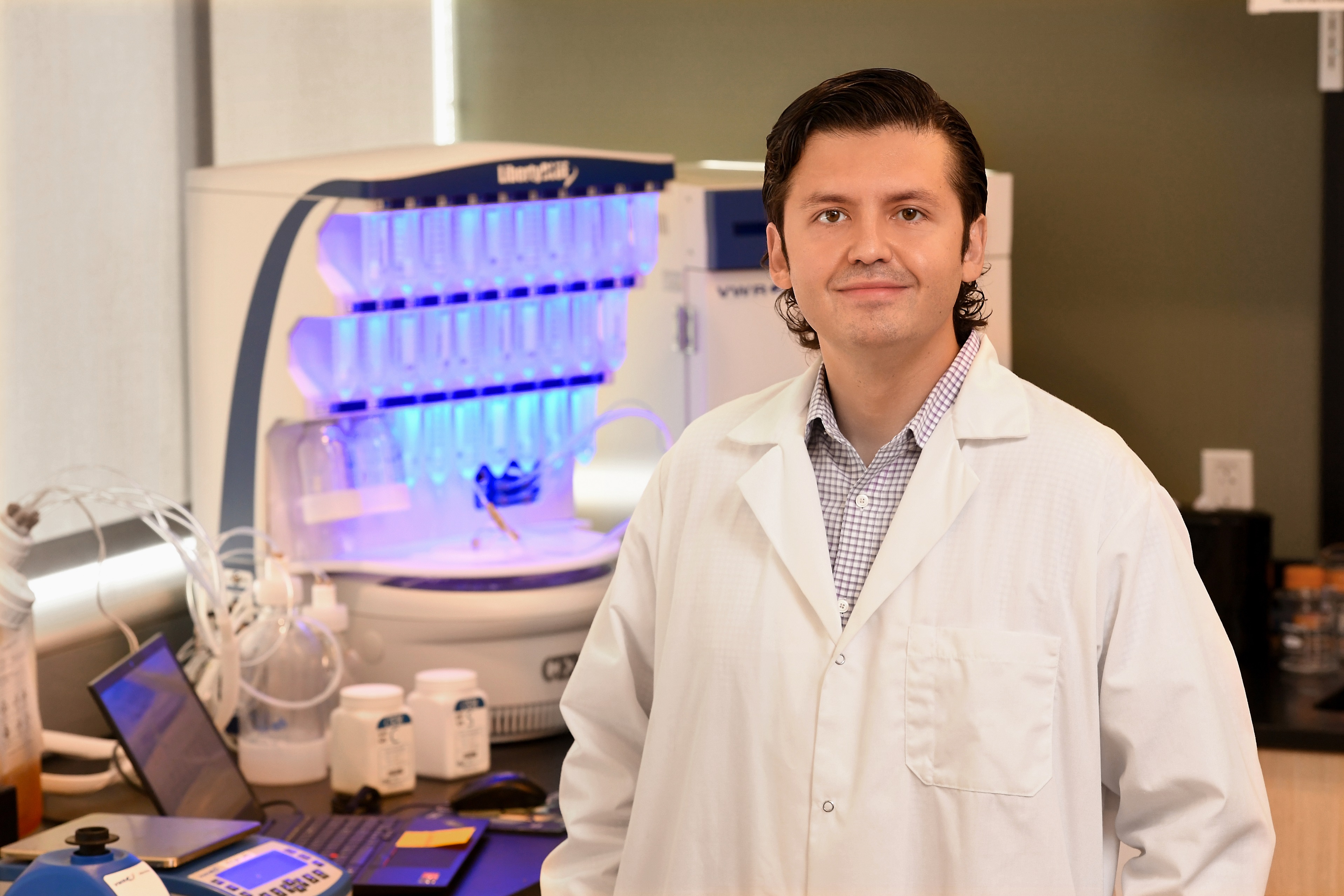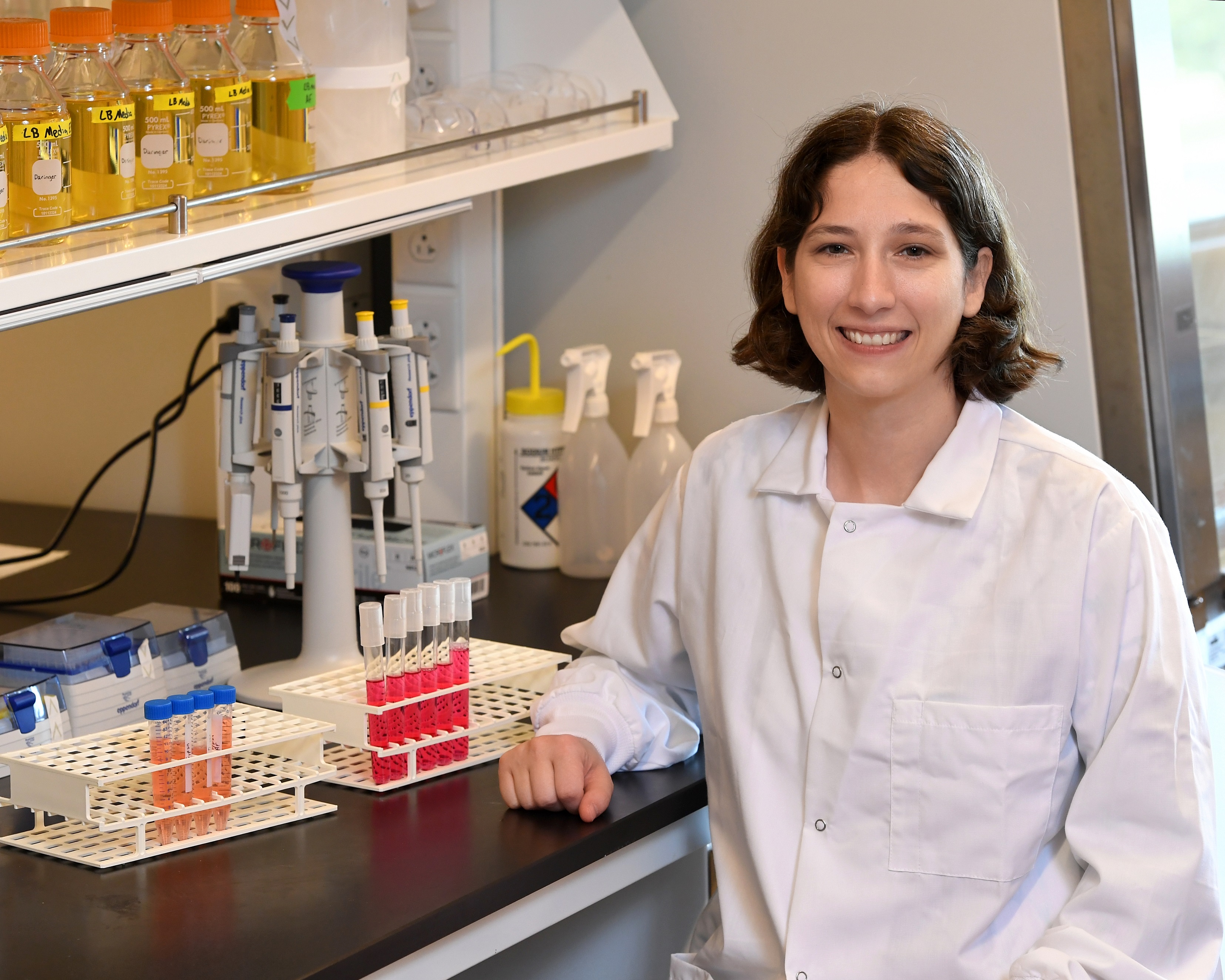Rowan Engineering research aims to create self-healing materials
Rowan Engineering research aims to create self-healing materials

What if, one day, you could walk into a doctor’s office, get an injection in your knee and stimulate the regeneration of cartilage?
That is one of the long-term goals of a $250,000 grant from the National Science Foundation awarded to Drs. Sebastián L. Vega and Nichole M. Daringer, assistant professors in the Department of Biomedical Engineering at Rowan University.
Although many tissue engineering approaches create biological substitutes to restore damaged tissues, these materials are unable to repair themselves. With this project, the researchers first hope to create a new class of living, self-healing materials that can detect and replace any missing matrix, the material in tissues that provide structural support.
Vega and Daringer are investigating the use of biological feedback, which is responsible for numerous bodily processes we take for granted, including clot formation after a cut, and the regulation of body temperature.
“These materials will rely on the use of a feedback loop between matrix and matrix-producing cells inside a temporary support hydrogel,” Vega said. “Cells will form a matrix with a special tag that tells cells to replace damaged or missing matrix, and to cease production once enough matrix is made.”
The investigators envision human cells will replace the synthetic hydrogel with a special matrix containing an “off” signal. If this special matrix breaks down (from injury, wear and tear, etc.), cells will sense this and react by making new matrix until there is enough “off” signal to tell the cells that they have produced enough. The end-result would be a living material that regenerates as needed.
“The future of Musculoskeletal care depends heavily on Regenerative Medicine,” commented Dr. Lawrence S. Miller, Chief and Chairman of the Department of Orthopaedic Surgery at Cooper University Hospital and the Cooper Medical School of Rowan University. “Currently, most of our modalities trigger a healing response that is mostly scar formation.The key for success is to develop procedures that can repair, rebuild and maintain normal tissue microstructure and matrix. This research addresses these critical needs.”
Vega was one of about 40 faculty members from around the world who were invited to attend an NSF Square-Table workshop titled “Programmable Interfaces: Exploring the Intersection of Synthetic Biology, Biomaterials, and Soft Matter” to think about ways of designing materials that were never thought possible. At the end of the workshop, attendees submitted more than 20 ideas for NSF proposals. Four were invited to submit official proposals, and Vega and Daringer’s was among those chosen.

"This is an exciting project that leverages Rowan’s growth as a leader in advanced biomaterials along with our leading medical programs in musculoskeletal treatment and disease," said Dr. Tabbetha Dobbins, interim vice president for research at Rowan University. “Their work represents the collaborative effort it takes in order to solve complex problems."
This two-year project merges the fields of synthetic biology and materials science and has broad applicability in regenerative medicine. Research will be conducted in the Vega and Daringer labs, located in Engineering Hall on the Glassboro campus and in the newly built Joint Health Sciences Building in Camden, N.J.